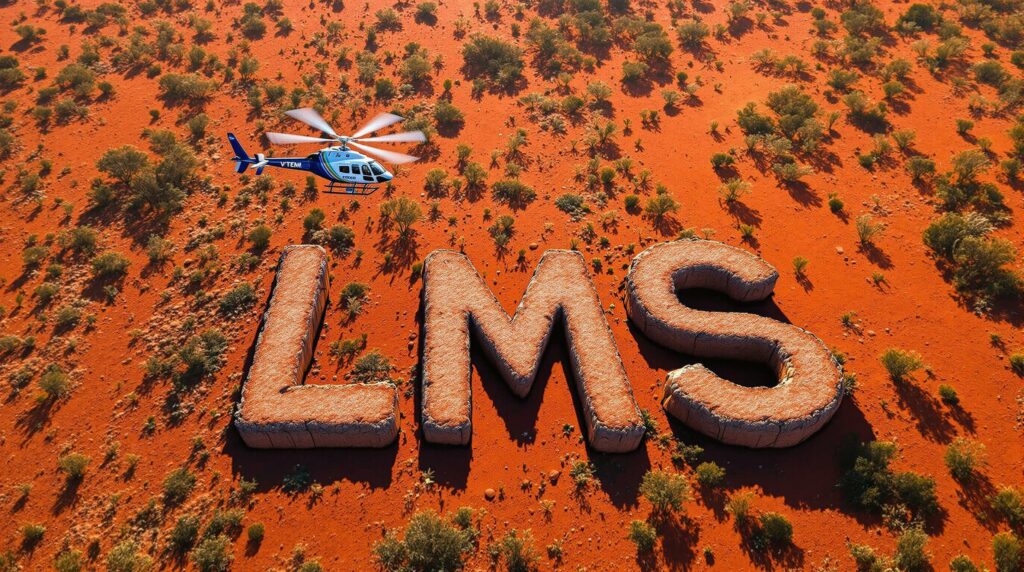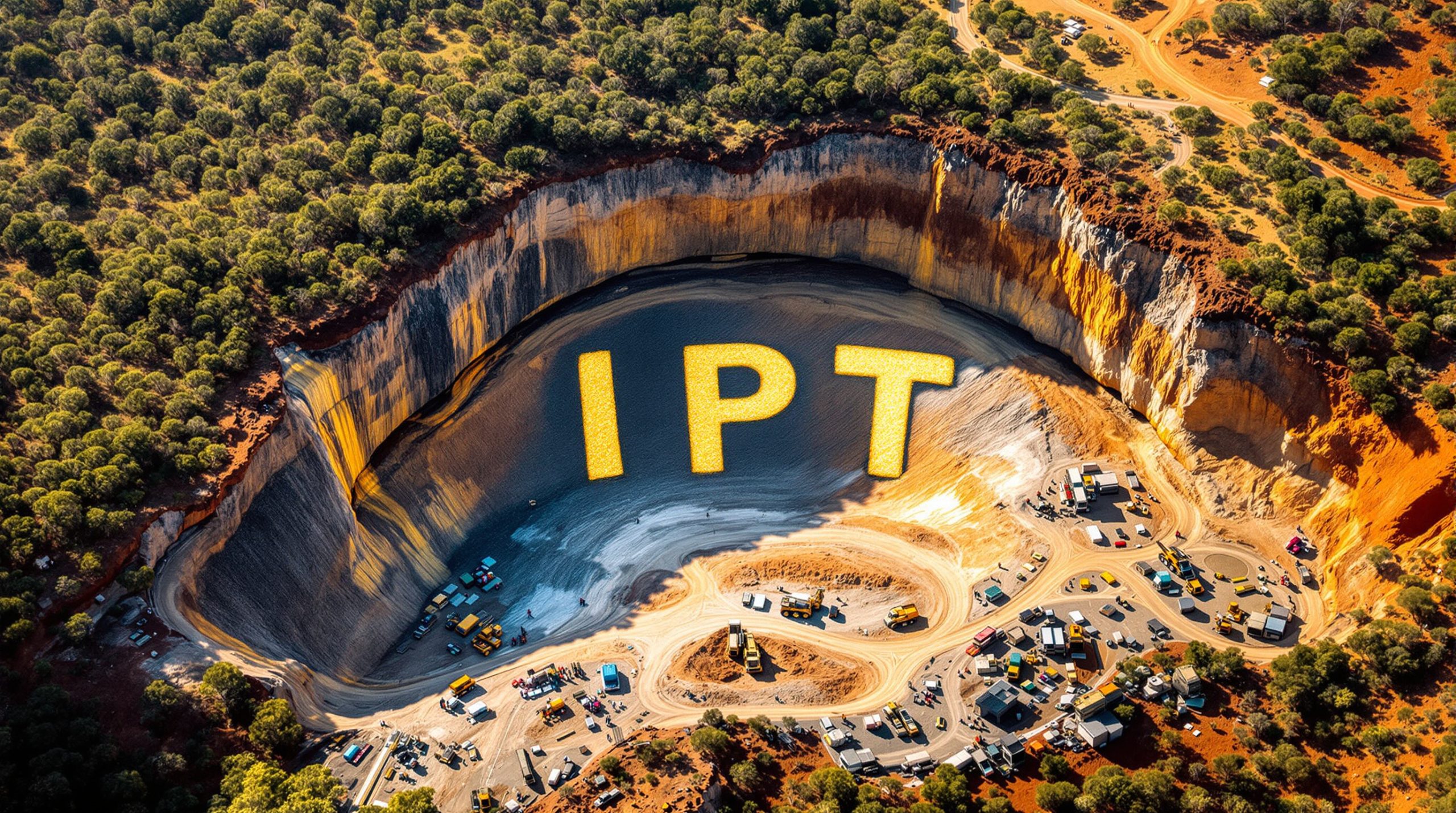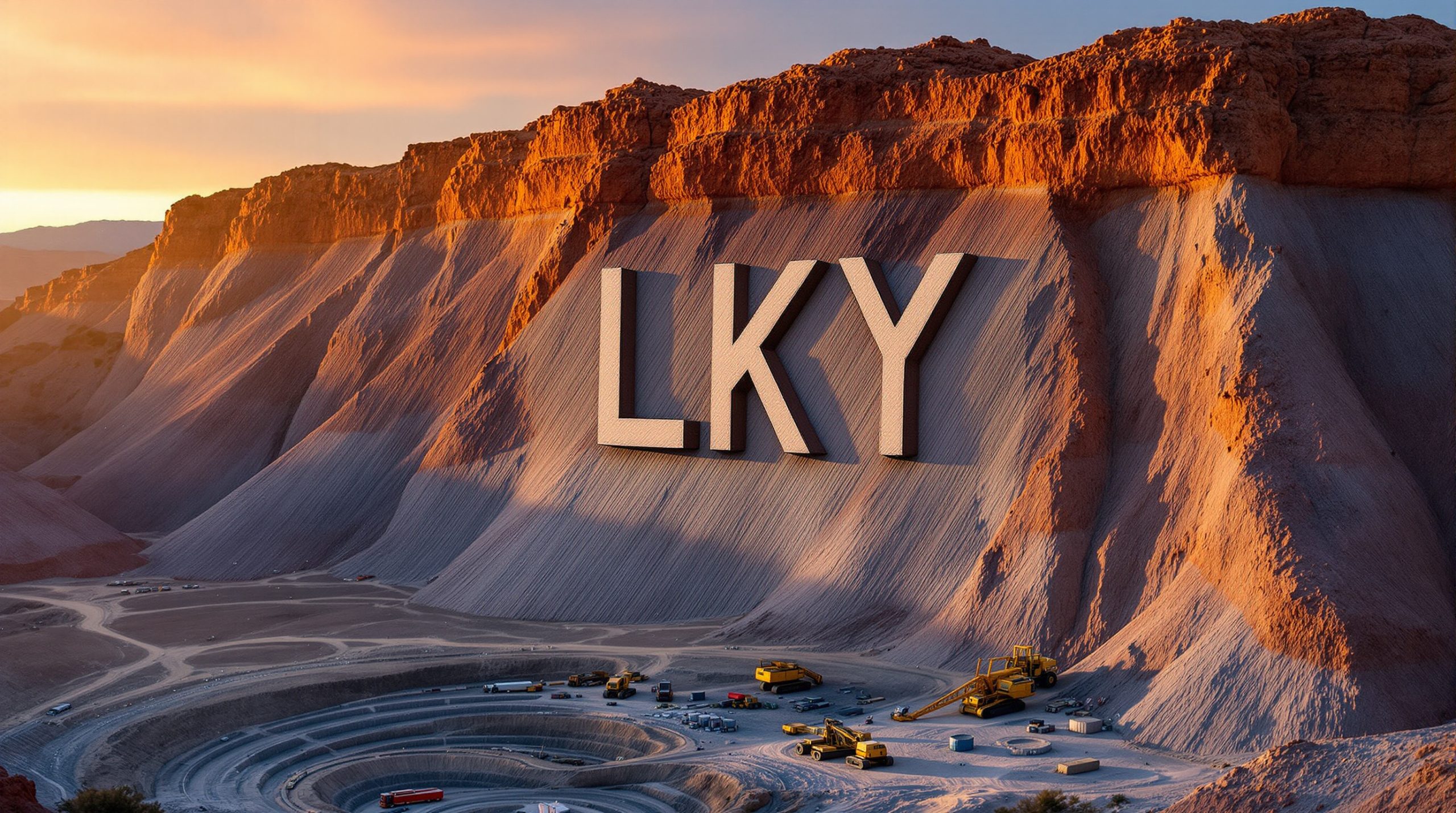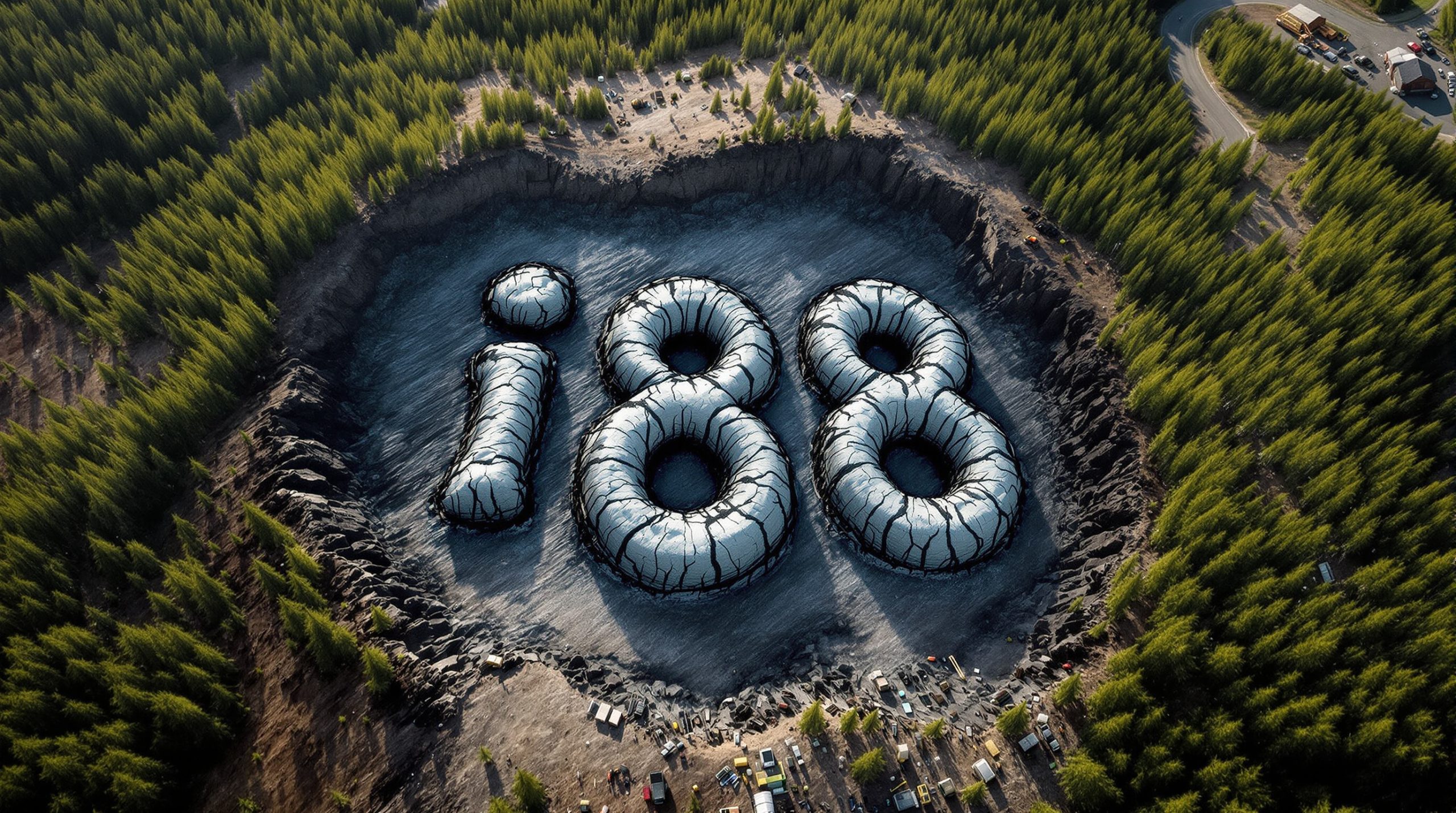Hunt for Massive Sulphides Begins with Advanced Airborne Technology
Litchfield Minerals (ASX: LMS) has initiated a comprehensive Versatile Time Domain Electromagnetic (VTEM™ Max) and magnetic survey across its entire Oonagalabi Project in the Northern Territory. The survey, which is already 21% complete, is designed to detect conductive massive sulphide mineralisation at depth and is expected to be fully completed by the end of this week.
The high-resolution airborne geophysical technique will cover 1,015 line kilometres of territory, including specialised 100m infill lines over high-priority areas, potentially revealing untested zones along the project's known 3km mineralised trend.
"The VTEM survey at Litchfield Minerals is a major step forward for Oonagalabi," said Managing Director Matthew Pustahya. "We already know from drilling that we have copper-zinc sulphides in the system and VTEM gives us the ability to see the bigger picture — both laterally and at depth. The potential for Oonagalabi to be either a SEDEX or Skarn system is exciting as both are known to host high-grade massive sulphide zones, which VTEM is ideally suited to detect."
VTEM: Advanced Electromagnetic Exploration Technology
For investors new to exploration techniques, VTEM (Versatile Time Domain Electromagnetic) survey technology represents one of the most advanced tools in modern mineral exploration. The system works by transmitting a powerful electromagnetic pulse into the ground and measuring the returning signal.
This technology is particularly valuable because it can detect conductive bodies—often representing massive sulphide mineralisation—hundreds of metres below the surface. The method provides a detailed subsurface image that can reveal potential ore bodies before a single drill hole is placed.
For Litchfield, this means the ability to efficiently map the entire project area and identify the most promising drill targets, potentially saving significant exploration costs while maximising discovery potential.
Why Oonagalabi's Geology Makes VTEM the Perfect Tool
The Oonagalabi Project shows characteristics of either a Sedimentary Exhalative (SEDEX) or Skarn-style mineral system. Both deposit types typically contain:
- Massive sulphide zones rich in conductive minerals like chalcopyrite and pyrrhotite
- Strong potential for copper, zinc, and gold mineralisation
- Extensive mineralised systems that can be efficiently mapped with electromagnetic methods
Previous drilling has already confirmed copper-zinc sulphide mineralisation over significant widths, but only a small portion of the known mineralised trend has been tested. The VTEM program will provide a comprehensive view of the entire project area, potentially revealing:
- Untested mineralised zones along strike
- Deep extensions of known mineralisation
- Structural controls that influence mineralisation placement
- New targets outside the known mineralised corridor
Survey Specifications and Timeline
| Survey Component | Details |
|---|---|
| Total Coverage | 1,015 line kilometres |
| Main Grid | 819 line km at 200m spacing (148°/328° orientation) |
| Infill Grid | 196 line km at 100m spacing over high-priority areas |
| Tie Lines | 2,000m spacing (58°/238° orientation) |
| Current Completion | 21% |
| Expected Completion | End of this week |
| Data Delivery | Final data within two weeks post-survey |
| Target Interpretation | 7-10 days after data delivery by Mitre Geophysics |
The operational timeline shows rapid progression:
- Survey preparation began on 5 August 2025
- Flying commenced on 10 August 2025
- Full completion expected within 4-5 days of commencement
- Drill-ready targets identified approximately one month from survey start
The "Bomb Diggity" and Gold Potential
Among the high-priority targets at Oonagalabi is the intriguingly named "Bomb Diggity" intrusion, which has been identified as a priority target. Previous announcements by Litchfield have indicated gold potential in high-magnetic zones at Oonagalabi, with the Bomb Diggity feature representing a particularly compelling target.
The current VTEM survey will provide additional data on these potential gold-bearing intrusions, complementing the company's primary focus on copper-zinc mineralisation and potentially adding significant value to the project.
Understanding SEDEX and Skarn Deposit Types
Sedimentary Exhalative (SEDEX) Deposits
SEDEX deposits form when metal-rich hydrothermal fluids are released into ocean water and precipitate minerals on the seafloor. These deposits:
- Typically form in sedimentary basin environments
- Often contain stratiform bodies of sulphide minerals
- Can host significant zinc, lead, copper, and silver mineralisation
- Frequently occur in large systems with multiple mineralised horizons
Notable examples include Mount Isa in Australia and Red Dog in Alaska.
Skarn Deposits
Skarn deposits form at the contact between intrusive igneous rocks and carbonate-rich sedimentary rocks. These deposits:
- Develop through contact metamorphism and metasomatism
- Often contain copper, zinc, lead, gold, and other metals
- Typically have complex mineralogy with various sulphide minerals
- May be associated with porphyry systems in some cases
Well-known examples include the Antamina mine in Peru and the Cantung deposit in Canada.
Both deposit types can host substantial mineral resources, and the application of VTEM technology is particularly effective in identifying their conductive sulphide components.
Upcoming Catalysts and Investment Significance
For investors, Litchfield's exploration program presents several near-term catalysts:
- VTEM results defining high-priority conductors (expected within one month)
- Drilling at the Bomb Diggity intrusion and suspected gold-bearing zones
- Follow-up drilling on any priority VTEM conductors identified
The Oonagalabi Project represents a compelling exploration opportunity due to:
- Multiple commodity potential (copper, zinc, and gold)
- Location in the mining-friendly Northern Territory
- Evidence of significant mineralisation from previous drilling
- Application of advanced technology to efficiently identify targets
- Rapid progression from survey to drilling
Why Critical Mineral Explorers Deserve Attention
Litchfield Minerals positions itself as a critical mineral explorer focused primarily on base metals and uranium in the Northern Territory. The company's focus on copper is particularly noteworthy given the metal's essential role in the global energy transition.
Copper demand is projected to significantly outpace supply in coming years due to its crucial applications in renewable energy infrastructure, electric vehicles, and electronics. Companies successfully identifying and developing new copper resources will be well-positioned to benefit from these macro trends.
As Litchfield advances the Oonagalabi Project with its potential for copper-rich massive sulphides, investors have an opportunity to participate in the early stages of what could develop into a significant discovery in a tier-one mining jurisdiction.
The completion of the VTEM survey represents a pivotal moment for the project, potentially revealing the true scale and potential of the mineralised system and setting the stage for targeted drilling in the coming months.
With the survey already 21% complete and proceeding on schedule, Litchfield appears poised to rapidly advance its understanding of the Oonagalabi system, potentially leading to the identification of multiple high-priority drill targets across the project area.
Ready to Invest in Critical Mineral Exploration?
Don't miss the opportunity to be part of Litchfield Minerals' exciting copper-zinc exploration journey at the Oonagalabi Project. With advanced VTEM technology already uncovering potential massive sulphide targets and multiple near-term catalysts on the horizon, now is the perfect time to learn more about this ASX-listed critical minerals explorer. Visit www.litchfieldminerals.com.au today to discover how LMS is positioning itself at the forefront of Australia's resource sector.




